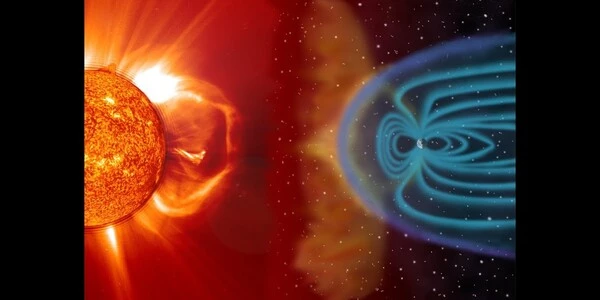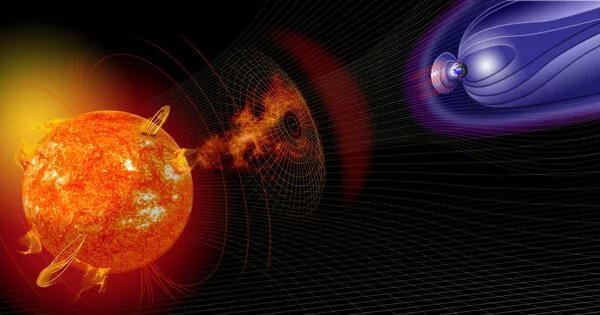Solar activity is increasing as we enter solar cycle 25, increasing the likelihood of solar storms-large releases of energy in the form of solar flares or coronal mass ejections. Due to increased radiation exposure, solar storms can have a significant impact on Earth’s technology as well as satellites and spacewalking astronauts. According to NASA, large geomagnetic storms on Earth can interfere with high-frequency radio communications and Global Positioning Systems (GPS).
A research team led by Lund University in Sweden discovered evidence of an extreme solar storm that occurred around 9,200 years ago by analyzing ice cores from Greenland and Antarctica. What puzzles the researchers is that the storm took place during one of the sun’s more quiet phases — during which it is generally believed our planet is less exposed to such events.
The sun is a prerequisite for life on Earth. But our life-giving companion can also cause problems. When there is strong activity on the surface of the sun, more energy is released, something that can give rise to geomagnetic storms. This in turn can cause power outages and communication disturbances.
We studied drill cores from Greenland and Antarctica and discovered traces of a massive solar storm that hit Earth around 9,200 years ago during one of the sun’s passive phases. These massive storms are currently under-represented in risk assessments. It is critical to consider what these events might mean for today’s technology and how we can protect ourselves.
Raimund Muscheler
It is difficult to forecast solar storms. They are currently thought to be more likely during the sun’s active phase, or solar maximum, during the so-called sunspot cycle. However, according to a new study published in Nature Communications, this may not always be the case for extremely large storms.
“We studied drill cores from Greenland and Antarctica and discovered traces of a massive solar storm that hit Earth around 9,200 years ago during one of the sun’s passive phases,” says Raimund Muscheler, a geology researcher at Lund University.
The researchers looked for peaks of the radioactive isotopes beryllium-10 and chlorine-36 in the drill cores. These are created by high-energy cosmic particles that collide with Earth and can be preserved in ice and sediment.
“This is laborious and costly analytical work. As a result, we were pleasantly surprised to discover such a peak, indicating a previously unknown giant solar storm in conjunction with low solar activity” Raimund Muscheler says.

If a similar solar storm were to take place today, it could have devastating consequences. In addition to power outages and radiation damage to satellites, it could pose a danger to air traffic and astronauts as well as a collapse of various communication systems.
“These massive storms are currently under-represented in risk assessments. It is critical to consider what these events might mean for today’s technology and how we can protect ourselves” Raimund Muscheler concludes.
According to ESA’s Space Weather Service Network, while solar storms rarely pose a direct threat to human life, there is a risk that they will have an impact on safety-critical systems via electromagnetic effects, ranging from space-based communications, navigation, and weather forecasting services to electrical power distribution at ground level.
It’s been conjectured that a storm on the scale of the Carrington event, if it happened today, could cause an internet apocalypse, sending large numbers of people and businesses offline. For this reason, the U.K. government(opens in new tab) lists adverse space weather as one of the most serious natural hazards in its National Risk Register, and companies have contingency plans to deal with severe events — as long as they have sufficient warning of them.
During a geomagnetic storm, the Earth’s atmosphere absorbs storm energy, heats up, and expands upwards, resulting in a significantly denser thermosphere that extends from about 50 miles (80 kilometers) to about 600 miles (1,000 kilometers) above the Earth’s surface. A denser thermosphere causes more drag, which can be problematic for satellites.
This is what happened in February, when a batch of newly launched Starlink satellites were unable to overcome the increased drag caused by the geomagnetic storm and began to fall back to Earth, eventually burning up in the atmosphere.
















